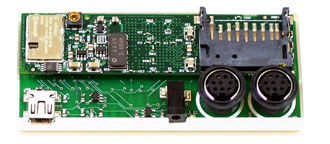Introduction
Updated August 13, 2005
Way back in March, I gave you plans on how to build your own "BlueSniper" rifle in How To: Building a BlueSniper Rifle Part 1. With the BlueSniper rifle, you can discover Bluetooth devices and perhaps perform exploits such as copying an address book. But the physical construction of the rifle is only half of the battle.In this installment, I'll cover the software side of construction by providing a step-by-step for building a custom Linux kernel for the rifle. I'll then guide you through transferring that kernel to the Gumstix computer that makes up the heart of the rifle and storing it in the Gumstix' flash memory. Finally, I'll show you how to use some of the basic Bluetooth tools that are built into the kernel.

Figure 1: Gumstix Computer - Actual Size!!
You will need six things to get started:
- The Gumstix Computer (either the waysmall 200st-bt or waysmall 400st-bt models)
- A computer with Linux installed (I used Fedora Core 2)
- A fast Internet connection to download the tools
- Serial null-modem cable (from gumstix.com) which connects the Gumstix to your computer
If you computer doesn't have a serial port, you can use a USB / Serial Adapter - Either the rubber-duck antenna from Gumstix or the antenna purchased in Part I of Building a BlueSniper Rifle
- At least one Bluetooth device that can be placed into discoverable mode
The major steps in the process you'll be following are:
- Install the Subversion version control client
- Build the toolchain library tree
- Edit the makefile to add Bluetooth
- Compile the kernel
- Transfer the kernel image to the Gumstix RAM
- Flash the Gumstix with the new kernel
Let's get going!
NOTE: While building the custom kernel, please follow all the steps and enter commands EXACTLY as given, because Linux is not very forgiving with spaces and misspelled letters. In addition, take the same care in transferring the image to the Gumstix as you would in flashing any firmware. Loss of power or data connection during the flash can result in a dead Gumstix!